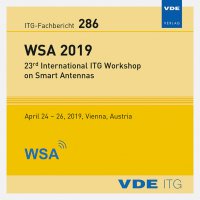A Fair Comparison Between Spatial Modulation and Antenna Selection in Massive MIMO Systems
Konferenz: WSA 2019 - 23rd International ITG Workshop on Smart Antennas
24.04.2019 - 26.04.2019 in Vienna, Austria
Tagungsband: WSA 2019
Seiten: 6Sprache: EnglischTyp: PDF
Persönliche VDE-Mitglieder erhalten auf diesen Artikel 10% Rabatt
Autoren:
Gaede, Bernhard; Bereyhi, Ali; Asaad, Saba; Mueller, Ralf R. (Institute for Digital Communications (IDC), Friedrich-Alexander-Universität Erlangen-Nürnberg (FAU), Germany)
Inhalt:
Both antenna selection and spatial modulation allow for low-complexity MIMO transmitters when the number of RF chains is much lower than the number of transmit antennas. In this manuscript, we present a quantitative performance comparison between these two approaches by taking into account implementational restrictions, such as antenna switching. We consider a band-limitedMIMO system, for which the pulse shape is designed, such that the outband emission satisfies a desired spectral mask. The bit error rate is determined for this system, considering antenna selection and spatial modulation. The results depict that for any array size at the transmit and receive sides, antenna selection outperforms spatial modulation, as long as the power efficiency is smaller than a certain threshold level. By passing this threshold, spatial modulation starts to perform superior. Our investigations show that the threshold takes smaller values, as the number of receive antennas grows large. This indicates that spatial modulation is an effective technique for uplink transmission in massive MIMO systems.


